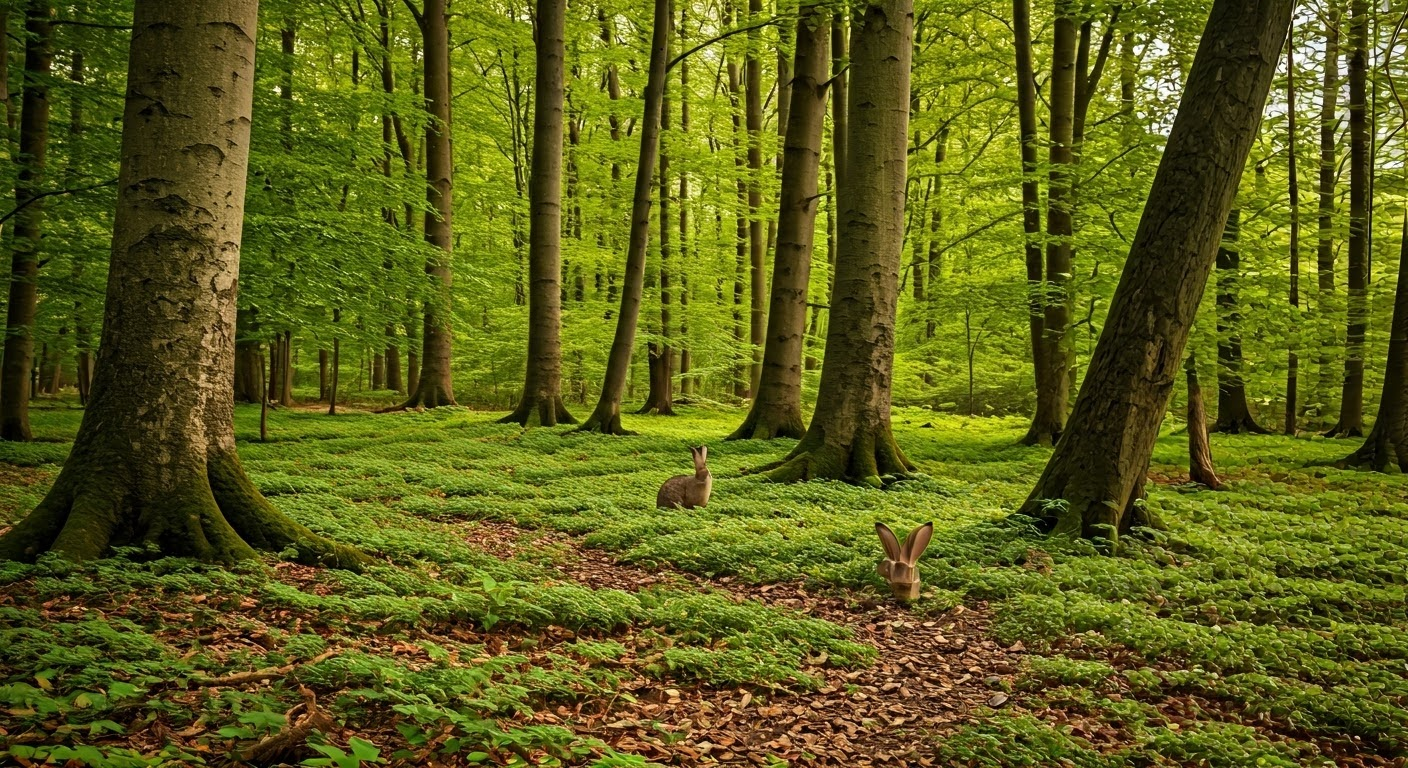Key Highlights
- Deciduous forests are home to many types of animals. Rabbits live here and play an important role in the food chain.
- Rabbits are primary consumers because they eat plants.
- Many predators in these forests rely on rabbits for food.
- A good balance between predators and prey is crucial for the forest’s health.
- Knowing about these connections shows us how complex deciduous forests are and why we need to help with conservation.
Introduction
Deciduous forests are full of different creatures and dominant animals. Many animals live here. Rabbits, like the cottontail rabbit and the snowshoe hare, are important. They often become food for bigger animals. By learning about the habitat of a cottontail rabbit in these forests, we can see how they survive. Rabbits also help keep nature balanced. When we ask, “What can eat a rabbit in a deciduous forest?” we discover how predators and prey connect in this biome. Knowing these relationships helps us understand how this ecosystem works.
Understanding the Deciduous Forest Ecosystem

Temperate deciduous forests experience four distinct seasons. In these forests, trees lose their leaves in the fall. The temperate forest biome is home to many living things, including temperate deciduous forest producers. Producers and decomposers all work together. They create a complex system. This system is essential for the temperate forest food chain. The food chain is very important for this ecosystem.
At the bottom of the food web, we have producers. These producers are plants, like shrubs, categorized into different trophic levels. They use sunlight to make energy through photosynthesis. This process changes carbon dioxide and water into sugars that have a lot of energy.
Next, we find primary consumers like rabbits and squirrels. They eat different species of plants. This makes them really important in the food web. They help share energy in the ecosystem.
The herbivores are food for secondary consumers. These are the predators in the forest. This balance is important for keeping the deciduous forest biome healthy and stable.
The Role of Rabbits in the Ecosystem
Rabbits play a key role as primary consumers in the food chain of a deciduous forest. They mostly eat plants, such as buds and twigs. These plants make their food through a process called photosynthesis. In photosynthesis, sunlight turns into chemical energy, which is stored as sugars. This energy kickstarts the food chain.
When rabbits eat plants, they take in the energy from those plants. Predators that eat rabbits can then use this energy. This flow of energy between living things is how the food chain works.
Rabbits are very important. They affect the number of predators in an area. As prey animals, they help keep the ecosystem balanced.
Key Predators of Rabbits in Deciduous Forests

Many hunters in the temperate deciduous forest food web, like raccoons, eat many types of food. Raccoons play a crucial role as omnivores, which means they eat both plants and animals. They depend on animals, such as rabbits, that also live in the temperate forest. These secondary consumers mostly eat meat, which makes them carnivores. They change how they hunt to catch their prey. They hunt in several areas, including the temperate grassland biome, the boreal forest biome, and the temperate rainforest biome. Here are some important examples:
|
Predator |
Description |
|
Foxes |
Skilled hunters with acute senses, known to prey on rabbits and use their hind feet for effective hunting tactics. |
|
Owls |
Nocturnal birds of prey with exceptional hearing and sight. |
|
Hawks |
Daytime raptors with keen eyesight for hunting. |
|
Coyotes |
Adaptable canids that include rabbits in their diet. |
|
Bobcats |
Elusive wild cats, skilled at ambushing prey. |
These predators help keep rabbit numbers down. This stops too much grass from being eaten. It also helps keep the forest ecosystem healthy.
Conclusion
In conclusion, the balance of the deciduous forest ecosystem depends on how animals and plants work together. Rabbits are very important in this system. They are a food source for many predators in the forest. This link helps keep the ecosystem healthy. Understanding these connections shows how all living things are linked. By studying relationships between species in deciduous forests, we can learn many valuable things about nature. We see why every creature is important for keeping biodiversity alive. If you want to know more about this interesting ecosystem, check out our frequently asked questions section for more information.
Frequently Asked Questions
What animals are the primary predators of rabbits in deciduous forests?
Foxes, owls, hawks, coyotes, and bobcats are key hunters of rabbits in deciduous forests. Each has special skills to catch rabbits. This hunting helps control the rabbit population.
How do rabbits contribute to the health of deciduous forests?
Rabbits are small mammals that benefit the soil. Their waste improves the soil. They eat fruits and plants. This action helps spread seeds. By doing this, they support other plants’ growth and bring in more kinds of plants in the forest.

Hi, I’m Sondip,
I’m a writer who loves to help people solve their problems. I write about small animals like mice and other small animals and even pests.

